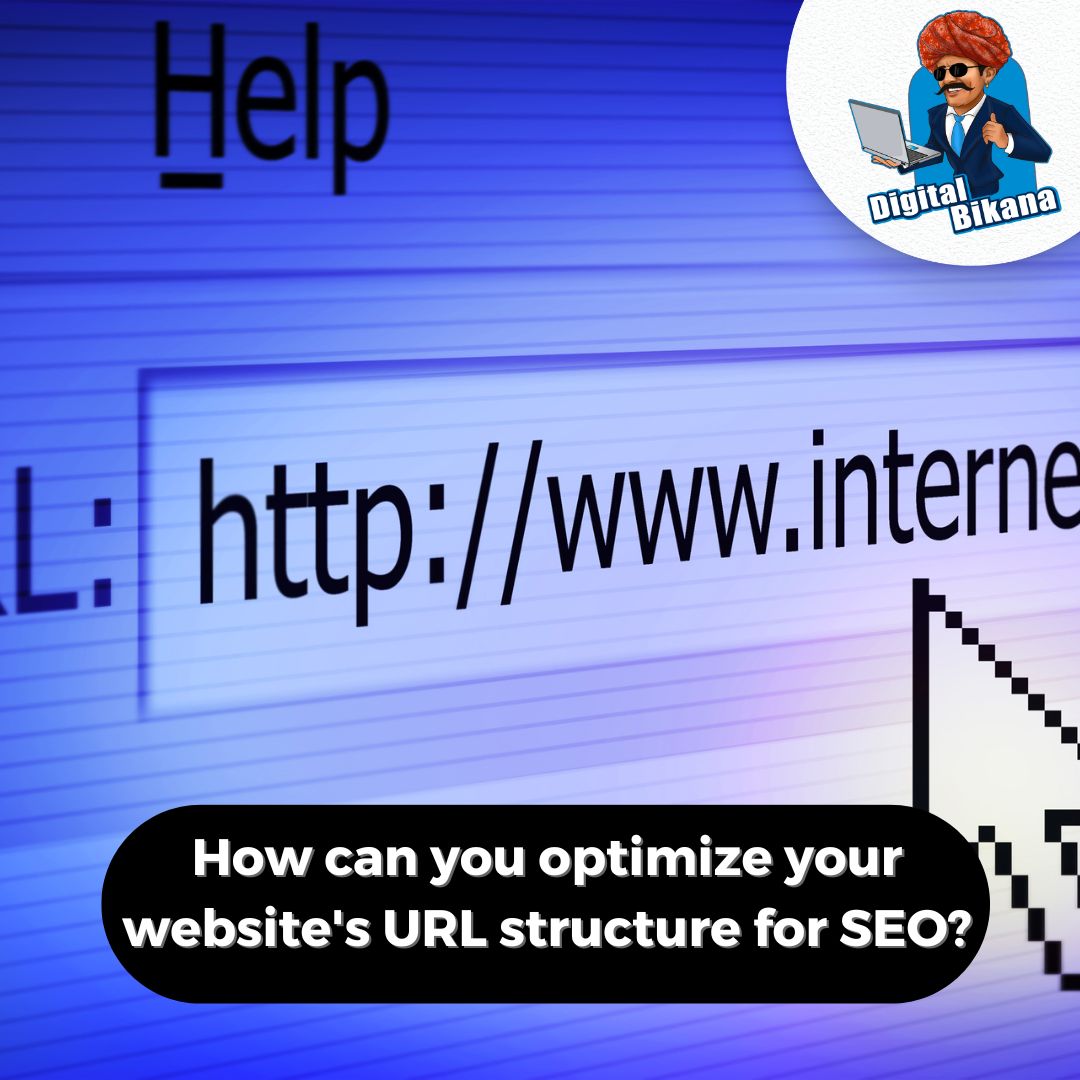How can you Optimize Your Website‘s URL Structure for SEO?
In this article we are going to understand how can you Optimize your Website‘s URL Structure for SEO? In the realm of search engine optimization (SEO), every aspect of your website plays a crucial role in determining its visibility and ranking in search engine results. One such aspect that often gets overlooked but holds significant importance is the URL structure of your website. Optimizing your website’s URL structure can positively impact your SEO efforts by improving search engine crawlability, user experience, and click-through rates.
How can you Optimize Your Website ‘s URL Structure for SEO?
In this comprehensive guide, we will delve into the significance of URL structure in SEO and provide actionable tips on how to optimize your website’s URL structure to enhance your SEO performance.
1. Keep URLs Simple and Descriptive
Simplicity and descriptiveness are key elements of a well-optimized URL structure. When creating URLs for your web pages, strive for simplicity by keeping them concise, easily readable, and reflective of the page’s content. Long, convoluted URLs with unnecessary parameters or excessive numbers can confuse both search engines and users. Instead, aim for short and descriptive URLs that accurately represent the topic of the page. Including relevant keywords in the URL can provide additional context and improve search engine visibility. For example, Instead of using a complicated URL like “www.example.com/page?id=12345,” choose a more descriptive one like “www.example.com/product-name” that clearly indicates the content of the page.
2. Use Hyphens to Separate Words
When structuring URLs, it’s best to use hyphens (-) as word separators. Hyphens are considered more search engine-friendly compared to underscores (_) or spaces. By using hyphens, you create URLs that are easier for both search engines and users to interpret. Hyphens ensure that each word in the URL is treated as a separate entity, allowing search engines to identify the individual keywords more accurately. For instance, a URL like “www.example.com/seo-tips” is more readable and SEO-friendly than “www.example.com/seotips” or “www.example.com/seo_tips.”
Read Also: What is a keyword in a SEO?
3. Remove Stop Words and Irrelevant Words
To maintain a clean and concise URL structure, it is important to remove unnecessary stop words and irrelevant words from your URLs. Stop words are common words like “and,” “the,” “of,” etc., that do not carry much semantic value. Removing these words from the URL helps streamline it and emphasizes the important keywords. It also makes the URL more readable and user-friendly. For example, instead of a URL like “www.example.com/best-tips-for-seo-optimization,” use “www.example.com/seo-optimization-tips” to focus on the core keywords.

4. Use Lowercase Letters
Keeping things consistent is important when it comes to URL structure. To avoid confusion and potential duplicate content issues, it is recommended to use lowercase letters consistently in your URLs. Search engines treat uppercase and lowercase letters as different characters, and using mixed case in URLs can lead to indexing problems. By keeping all your URLs in lowercase, you ensure uniformity and simplify the URL structure.
5. Include Target Keywords
Incorporating relevant target keywords in your URL structure can positively impact your SEO efforts. Conduct thorough keyword research to identify the most valuable and relevant keywords for your content. Once you have identified the target keywords, include them naturally in the URL, preferably towards the beginning. This practice helps search engines understand the relevance of the page to specific search queries. However, it’s important to find a balance between making your URLs optimized for search engines and easy for users to read and understand. Avoid keyword stuffing or creating lengthy URLs solely for the purpose of including keywords. Focus on creating URLs that are both user-friendly and keyword-rich.
Read Also: How can you Optimize Your Website for Voice Search?
6. Create a Logical Hierarchy
Establishing a logical hierarchy in your URL structure can improve both search engine crawlability and user experience. Use categories and subcategories to organize your URLs, reflecting the hierarchical structure of your website. This helps search engines understand the relationships between different pages and the overall structure of your website. For example, a URL like “www.example.com/category/subcategory/page” signifies a clear hierarchy and aids in contextual understanding.
7. Implement Proper Redirects
When making changes to your website’s URL structure or migrating to a new domain, it is crucial to set up proper redirects. Redirects ensure that users and search engines can find the updated content without encountering broken links or error messages. The most commonly used redirect is the 301 redirect, which permanently redirects the old URL to the new one. By implementing proper redirects, you preserve the SEO value and rankings of the old URLs while providing a seamless browsing experience for users.
Read Also: What is the Role of XML Sitemaps in SEO?
8. Avoid Dynamic and Parameterized URLs
Dynamic URLs with multiple parameters and query strings can present challenges for search engine indexing and lead to duplicate content issues. Whenever possible, avoid using dynamic URLs and instead opt for static, keyword-rich URLs that accurately represent the content of the page. If parameters are necessary, ensure they are properly structured and do not generate infinite variations of the same page. Search engines prefer static URLs that are more descriptive and meaningful to both search engines and users.
You can also checkout this digital marketing institute to learn digital marketing course by enrolling in our course Or Contact Digital Bikana on +91-8949483728

Conclusion:
Optimizing your website’s URL structure is a fundamental aspect of SEO that should not be overlooked. A well-optimized URL structure enhances search engine visibility, improves user experience, and increases the likelihood of higher click-through rates. By following the actionable tips outlined in this comprehensive guide, such as keeping URLs simple and descriptive, using hyphens as word separators, removing stop words and irrelevant words, including target keywords, establishing a logical hierarchy, implementing proper redirects, and avoiding dynamic URLs, you can optimize your website’s URL structure for better SEO performance. Remember, a well-structured URL not only helps search engines understand your content but also provides a better user experience, ultimately contributing to the success of your website in the digital landscape. So, Now I hope you have understood about How can you Optimize Your Website‘s URL Structure for SEO?

